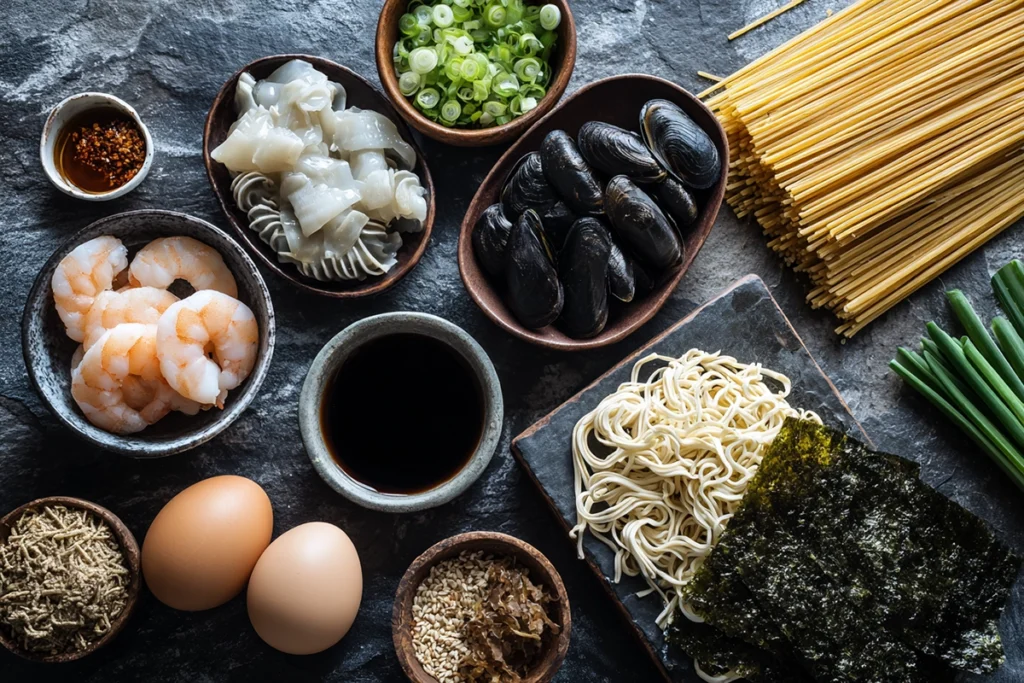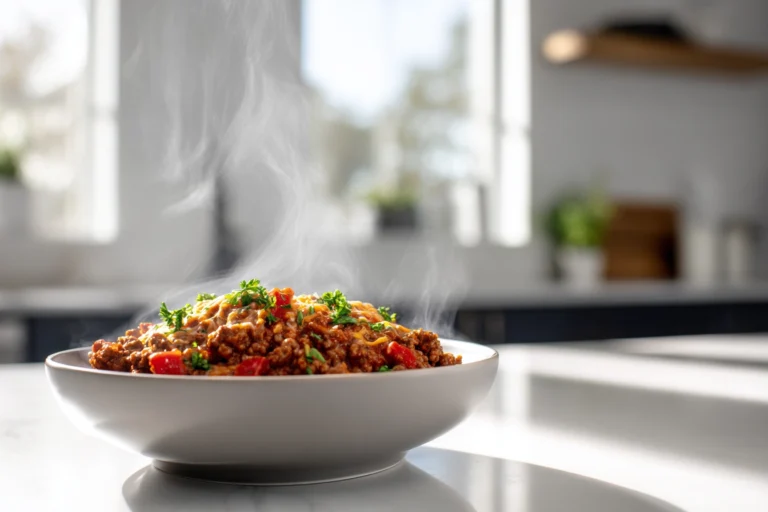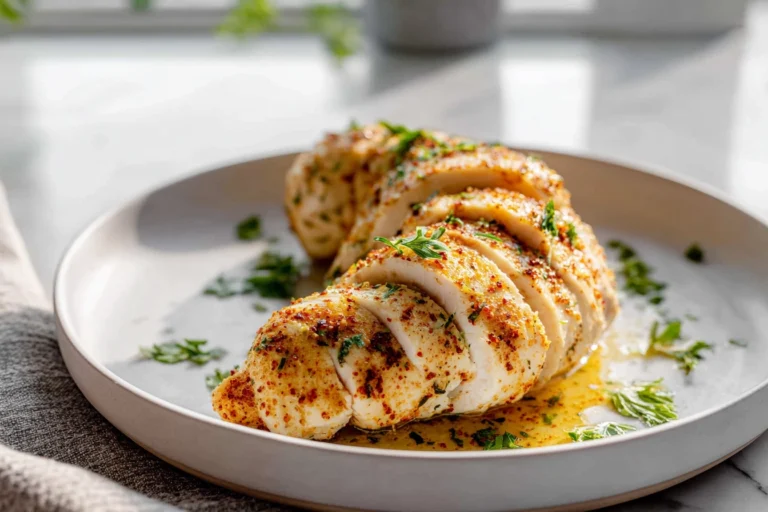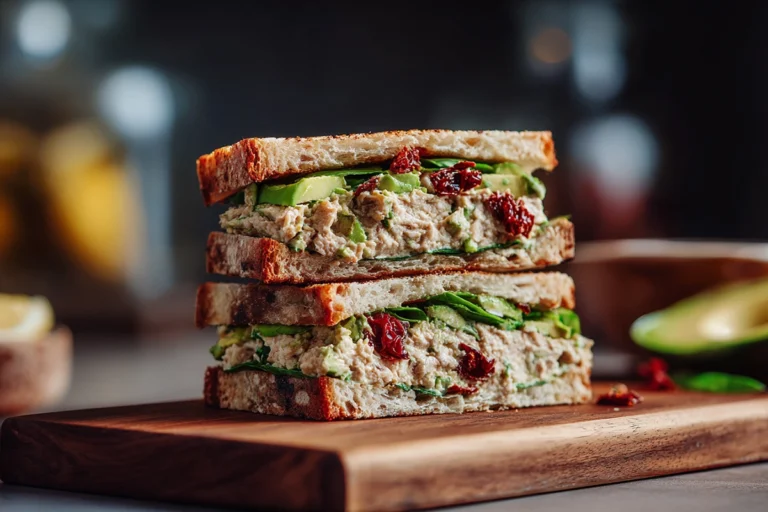How to Make Seafood Ramen at Home (Authentic & Easy Recipe)
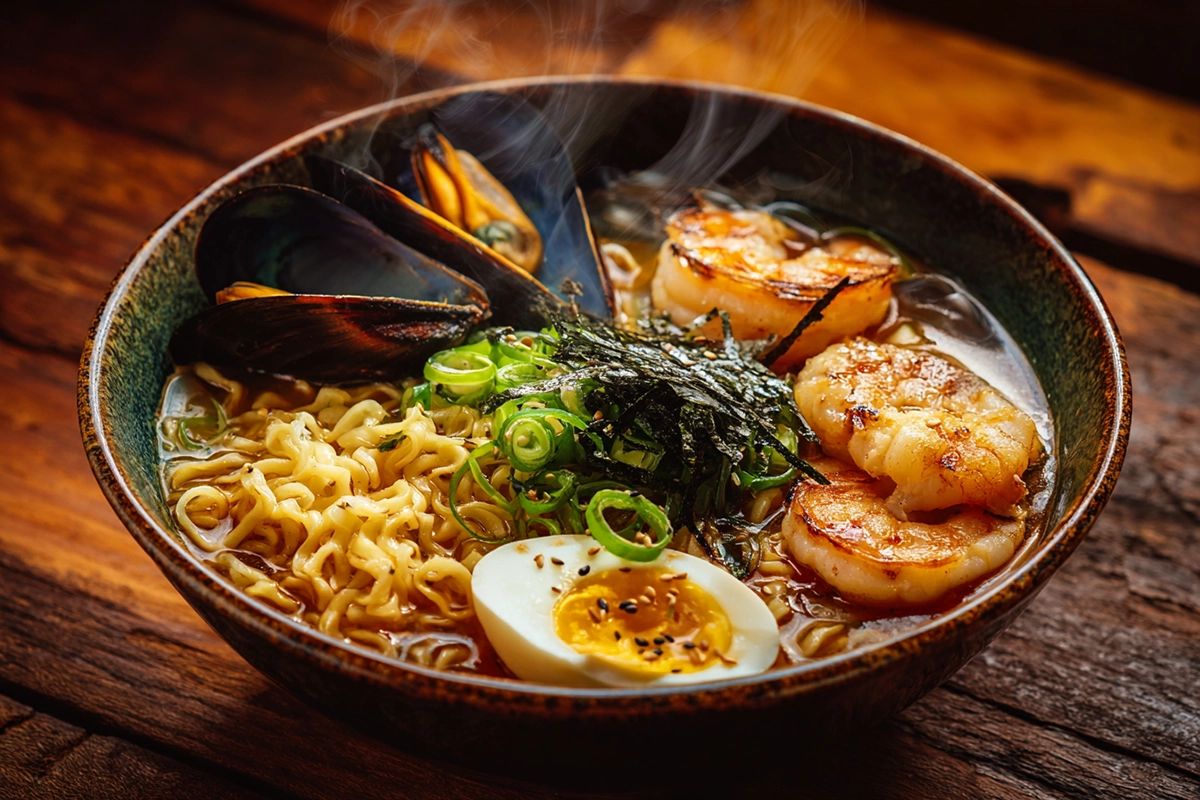
There’s something magical about lifting a steamy bowl of seafood ramen to your face—the ocean-like aroma rising, the soft slurp of noodles, and that first spoonful of umami-rich broth that warms your entire soul. For me, seafood ramen was love at first taste during a rainy evening in a small ramen shop in Los Angeles. I didn’t expect it to hit harder than any comfort food I’d known.
Since then, I’ve been trying to recreate that bowl at home. And I promise you can do the same with a few tips and the right ingredients. This isn’t just about a recipe—it’s about bringing rich broth, tender seafood, and chewy noodles into a bowl that tastes like a hug.
Let’s dive into everything you need to know to make delicious, satisfying seafood ramen at home.
What Is Seafood Ramen? A Flavorful Fusion of Land and Sea
Seafood ramen is a variation of Japanese ramen that swaps pork or chicken broth for a lighter, ocean-inspired base. While traditional ramen may rely on tonkotsu (pork bone) or shoyu (soy sauce) broth, seafood ramen originates from kombu, dried bonito flakes, clams, shrimp, and scallops.
Unlike instant cup noodles, real seafood ramen is a balanced dance of salt, fat, and umami. The broth is light yet complex, and the toppings—such as prawns, mussels, or fish cake—bring richness without heaviness.
This dish is especially popular in coastal Japan but has a devoted following in U.S. cities like San Francisco, Seattle, and New York.
Key Ingredients for the Perfect Seafood Ramen
Here’s what you’ll typically need to create an unforgettable bowl:
Broth Base
- Dashi (made from kombu and katsuobushi)
- Miso paste or soy sauce (for depth)
- Seafood stock or clam juice
Proteins
- Shrimp
- Scallops
- Mussels or clams
- Optional: white fish or squid
Noodles
- Fresh ramen noodles or frozen ramen noodles (available at Asian markets or online)
Toppings
- Soft-boiled eggs (ajitsuke tamago)
- Sliced green onions
- Nori (seaweed sheets)
- Corn kernels
- Fish cake (narutomaki)
- Bean sprouts
- Sesame seeds
Ramen noodles, miso paste, and other staples can be easily found at your local Asian grocery or ordered online through retailers like Amazon or H-Mart.
Step-by-Step Guide: How to Make Seafood Ramen at Home
Here’s a simple structure that brings restaurant flavor to your home kitchen.
Step 1: Prepare the Broth
In a large pot, combine:
- 4 cups of water
- A 4-inch piece of kombu
- 1 cup dried bonito flakes
Simmer for 10 minutes, then strain. Add:
- 2 tablespoons soy sauce
- 1 tablespoon miso paste
- 1 cup clam juice or seafood stock
Let it simmer gently while you prep other ingredients.
Step 2: Cook the Seafood
In a separate skillet, heat a bit of oil and lightly sauté:
- ½ lb shrimp (peeled, deveined)
- 4–6 scallops
- ½ cup mussels (cleaned)
Cook just until done—seafood cooks quickly and stays tender if not overdone.

Step 3: Boil the Noodles
Cook your ramen noodles according to package instructions (typically 3–4 minutes). Drain and set aside.
Step 4: Assemble the Bowls
In each bowl:
- Add a portion of noodles
- Pour hot broth over noodles
- Top with seafood and preferred garnishes
Don’t forget your jammy egg and sliced scallions.
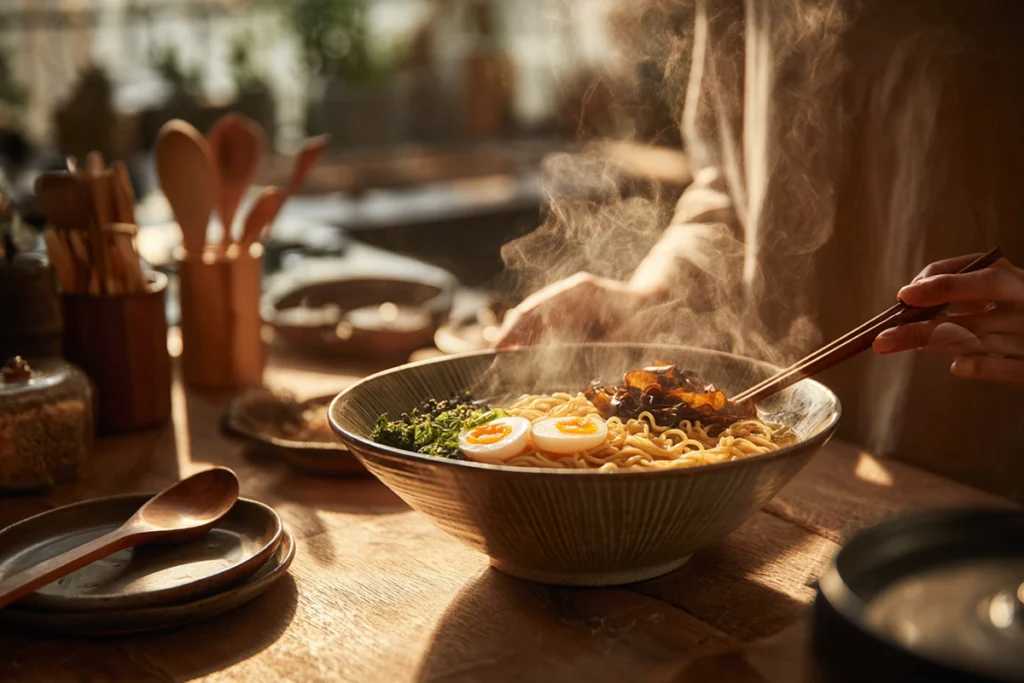
If you’re short on time, you can prep some ingredients ahead. Make the broth the day before and store it in the fridge. Boil the eggs in advance and peel them once cooled. You can even clean and portion the seafood ahead of time. When it’s time to cook, everything comes together fast. This makes seafood ramen a great weeknight meal. It’s also a smart choice when hosting guests—warm the broth and assemble. Fresh, hot, and deeply satisfying, it proves that restaurant-quality ramen isn’t out of reach in your kitchen.
Exploring Broth Bases: From Dashi to Miso
Your choice of broth is what defines the soul of your ramen.
Dashi-Based Broth
Dashi is light, oceanic, and deeply savory. It is the traditional choice and is simple to make with kombu and bonito flakes.
Miso-Based Broth
Hearty, nutty, and slightly creamy. Use white or red miso for different intensities.
Soy Sauce Broth
Salty and dark, this base offers a punchier flavor and pairs well with shellfish.
Bonus: Coconut Curry
Want a Southeast Asian twist? Make Thai-inspired seafood ramen with a base of coconut milk, red curry paste, and lime juice.
Top Seafood Choices for Ramen: Shrimp, Scallops, and Beyond
Here’s how different seafood affects flavor:
| Seafood | Flavor Notes | Tips |
|---|---|---|
| Shrimp | Sweet, briny | Peel and devein before cooking |
| Scallops | Buttery, tender | Sear quickly for best texture |
| Mussels | Briny, rich | Steam until shells open |
| White Fish | Mild, flaky | Add at the end to avoid breaking |
| Squid | Chewy, savory | Slice into rings and sauté |
When possible, buy wild-caught or sustainably farmed seafood. If you’re using frozen, thaw it in cold water for 15–20 minutes.
Creative Variations: Spicy, Cajun, and Korean-Inspired Seafood Ramen
Feeling adventurous? Here are some ideas for remixing your bowl.
Spicy Seafood Ramen
Add:
- Chili oil or sambal oelek
- Gochujang (Korean chili paste)
- Crushed red pepper flakes
Cajun-Style Seafood Ramen
Infuse broth with:
- Cajun seasoning
- Garlic
- A splash of hot sauce
Top with andouille sausage and corn for a New Orleans twist.

Korean Jjamppong-Inspired
Use:
- Gochugaru (Korean chili powder)
- Napa cabbage
- Pork slices along with seafood
This style brings heat and a deep seafood flavor.
Tips for Storing and Reheating Seafood Ramen
Here’s how to make the most of leftovers without compromising flavor.
Storage Tips
- Store broth, noodles, and seafood separately.
- Refrigerate within 1 hour of serving.
- Use airtight containers.
Reheating
- Reheat broth on the stove until it is simmering.
- Add noodles and seafood just before serving to keep them from turning mushy.
Stored properly, the broth lasts 3–4 days, and seafood is best eaten within 2 days.
Health Benefits and Nutritional Insights
Compared to pork-based ramen, seafood ramen offers several health perks:
- Lower in saturated fat
- High in lean protein (from shrimp and fish)
- Rich in omega-3 fatty acids
- Contains iodine and essential minerals
To make it even lighter:
- Use low-sodium broth
- Load up on veggies
- Skip high-fat toppings like extra mayo or fried garlic
Pairing Suggestions: What to Serve with Seafood Ramen
Turn your ramen bowl into a meal with these sides:
Appetizers
- Edamame with sea salt
- Gyoza (pan-fried dumplings)
- Seaweed salad
Beverages
- Unsweetened green tea
- Light beers like Sapporo
- Cold sake or sparkling water with lime
While rounding out the meal, these pairings focus on the rich, complex broth.
Bring the Flavor of the Ocean to Your Table
Whether you’re a ramen lover or just seafood curious, making seafood ramen at home is a rewarding way to enjoy bold flavors, fresh ingredients, and the warmth of a home-cooked bowl. It’s a dish that can be traditional or inventive, light or rich, depending on what you crave.
No matter the version, a bowl of seafood ramen is more than food—it’s a moment of comfort, care, and craft in every slurp.
FAQ
Can I use frozen seafood for ramen?
Yes, frozen seafood works well. Just make sure to thaw it fully and pat it dry before cooking to avoid excess moisture in the broth.
What type of noodles should I use for seafood ramen?
Fresh ramen noodles are ideal, but frozen or dried ramen noodles also work. Look for ones labeled “chukamen” at Asian groceries.
How can I make spicy seafood ramen?
To add spice, stir in chili oil, gochujang, or crushed red pepper. Start with a small amount and taste before adding more.
How long can I store leftover ramen?
Store noodles and broth separately. Seafood ramen broth lasts up to 3–4 days in the fridge, while the seafood is best eaten within 2 days.
Can I freeze seafood ramen?
You can freeze the broth for up to a month, but avoid freezing noodles or seafood, as they may become mushy or rubbery when thawed.

How to Make Seafood Ramen at Home (Authentic & Easy Recipe)
- Total Time: 40 minutes
- Yield: 2 to 3 servings 1x
Description
A flavorful, comforting bowl of seafood ramen made with miso-dashi broth, fresh shrimp, scallops, and mussels, served over ramen noodles with classic toppings like soft-boiled eggs, nori, and green onions. This easy homemade version brings bold umami flavor and restaurant-quality taste to your kitchen.
Ingredients
Broth Base:
4 cups water
4-inch piece of kombu
1 cup dried bonito flakes
2 tablespoons soy sauce
1 tablespoon miso paste
1 cup clam juice or seafood stock
Seafood:
½ lb shrimp, peeled and deveined
4–6 scallops
½ cup mussels, cleaned
Noodles & Garnishes:
Fresh or frozen ramen noodles
2 soft-boiled eggs, halved
Sliced green onions
Nori (seaweed sheets)
Corn kernels
Fish cake (narutomaki), optional
Bean sprouts
Sesame seeds
Instructions
-
Simmer kombu and bonito flakes in a large pot in 4 cups of water for 10 minutes. Strain and return the liquid to the pot.
-
Stir in soy sauce, miso paste, and clam juice or seafood stock. Let the broth simmer gently.
-
In a skillet, sauté shrimp, scallops, and mussels with a small amount of oil until just cooked through. Set aside.
-
Cook ramen noodles according to package directions. Drain and divide among bowls.
-
Pour hot broth over noodles and top with cooked seafood and garnishes: soft-boiled egg, green onions, nori, corn, bean sprouts, sesame seeds, and optional fish cake.
-
Serve immediately while hot.
Notes
Use frozen seafood if fresh is unavailable—thaw fully before cooking.
For a spicier variation, stir in chili oil or gochujang.
Broth, seafood, and noodles store better separately if made ahead.
- Prep Time: 15 minutes
- Cook Time: 25 minutes
- Category: Main Dish
- Method: Stovetop
- Cuisine: Japanese-American
What Are Our Readers Saying?
There are no reviews yet. Be the first one to write one.

